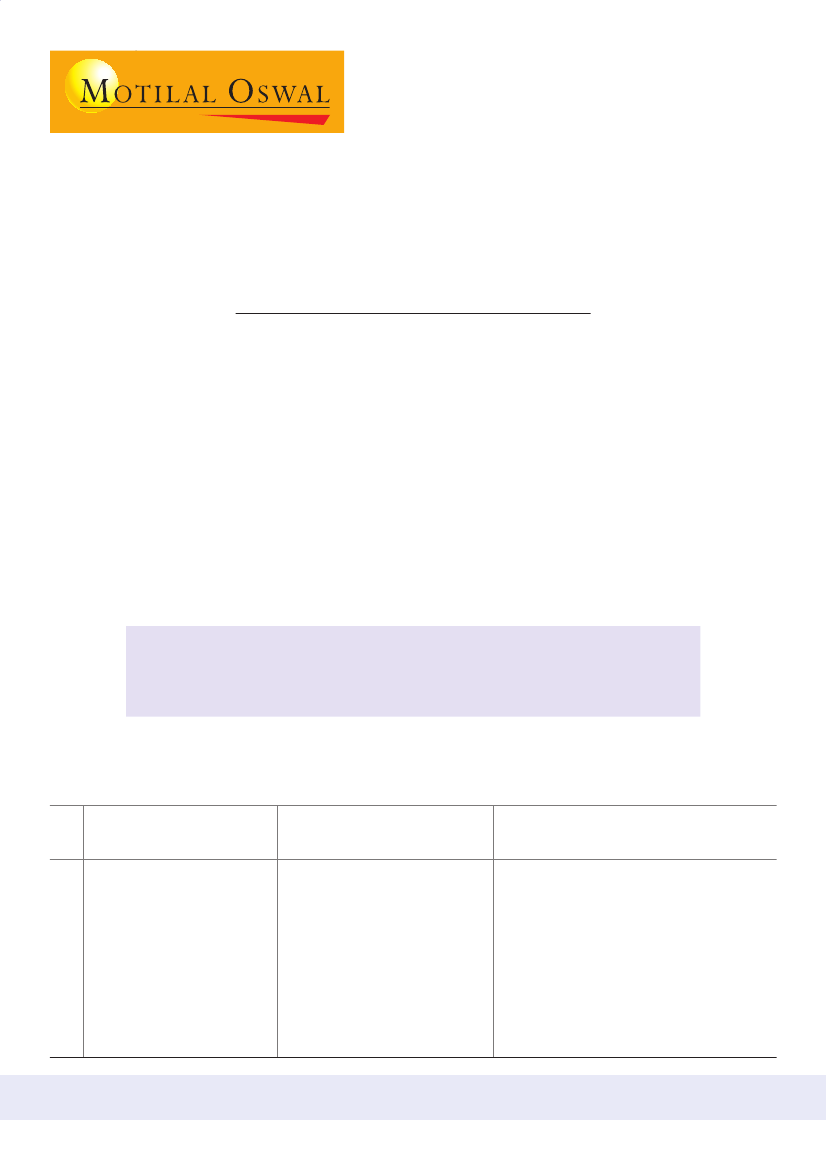
Thematic Study | November 2018
23RD ANNUAL WEALTH CREATION STUDY
(2013-2018)
Valuation Insights
What works, What doesn't
HIGHLIGHTS
The two key drivers of Intrinsic Value are Return on Equity (RoE) and Earnings growth
Companies create Intrinsic Value only when they earn RoE higher than Cost of Equity
Low RoE companies must focus on increasing RoE, high RoE companies on increasing
growth
Both high RoE and high Earnings growth are difficult to sustain
PEG (P/E to Growth ratio) less than 1x is a near-infallible formula for healthy
outperformance
Current market valuations imply robust earnings growth, which remains elusive. Hence,
expect market to remain soft
"In the Bible, it says that love covers a multitude of sins. Well, in the investing field, price
covers a multitude of mistakes. For human beings, there is no substitute for love. For investing,
there is no substitute for paying the right price - absolutely none."
– Arnold Van Den Berg, Outstanding Investor Digest, April 2004
TOP 10 WEALTH CREATORS (2013-2018)
THE BIGGEST
Wealth
Rank Company
Created
(INR b)
1
HDFC Bank
3,247
2
Reliance Industries
3,094
3
TCS
2,532
4
Maruti Suzuki
2,308
5
Hindustan Unilever
1,883
6
HDFC
1,640
7
Kotak Mahindra Bank 1,345
8
IOC
1,008
9
Larsen & Toubro
990
10
Bajaj Finance
902
THE FASTEST
5-Year
Company
Price
CAGR (%)
Indiabulls Ventures
97
Dalmia Bharat
81
TVS Motor
80
HEG
79
Sterlite Technologies
75
Bajaj Finance
73
Motilal Oswal
67
IIFL Holdings
64
NBCC
64
Eicher Motors
62
THE MOST CONSISTENT
Appeared
Company
in WC
Study (x)
Titan Company
10
Godrej Consumer
10
Shree Cement
10
Pidilite Industries
10
Maruti Suzuki
10
Marico
10
Asian Paints
10
HDFC Bank
10
Kotak Mahindra Bank
10
Dabur India
10
10-Year
Price
CAGR (%)
33
33
31
30
27
26
25
22
21
20
Raamdeo Agrawal
(Raamdeo@MotilalOswal.com) /
Shrinath Mithanthaya
(ShrinathM@MotilalOswal.com)
We thank Mr Dhruv Mehta (Dhruv.Mehta@dhruvmehta.in), Investment Consultant, for his invaluable contribution to this report.
1
Investors are advised to refer through important disclosures made at the end of the Research Report.